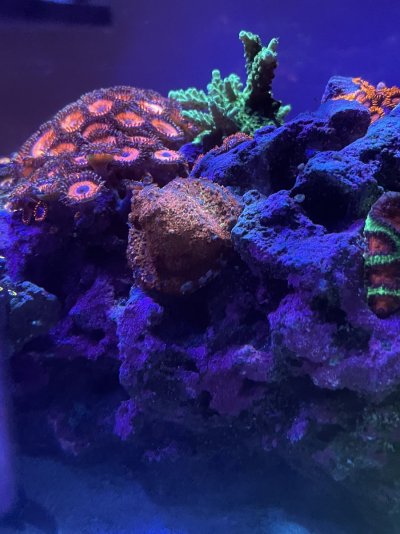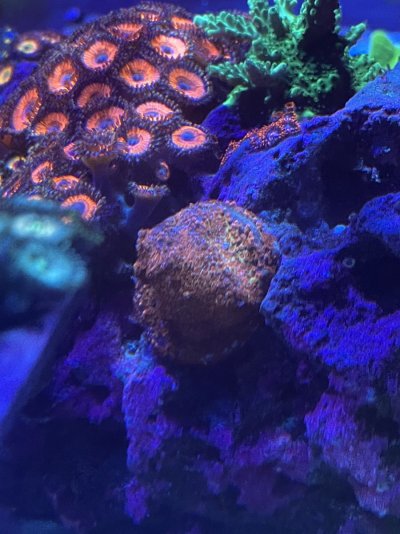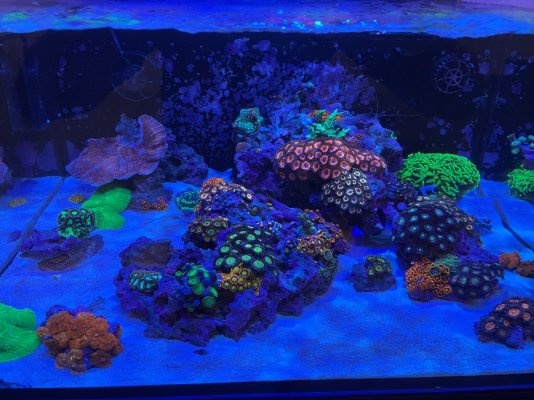- Joined
- May 19, 2019
- Messages
- 46
- Reaction score
- 26
I’ve had a JASON FOX BURNIN BANANA (cyphastrea) for 4 months now. It was doing excellent and encrusting onto the rock work, seemed to be off to a great start.
A couple weeks back it looked bland in color so I hit it with the turkey baster thinking it was dirty and flesh started flaking off along the edges. It doesn’t seem to be getting better, if anything slightly worse.
I have no idea what caused this, no major alk spikes or lighting adjustments or flow changes.
One suspicion is that I’ve been fighting my bottomed out nitrates for a few months now, but I don’t think this would kill it. I also had MOnti eating nudibranchs a couple months back that have fingers crossed been eradicated but I don’t think they eat cyphastrea. I also had a Calc spike around the same time where I screwed up on timer and Calc hit 490.
Any input on what may have caused this? Also moving forward should I break off the plug and dip or leave and hope for the best?
Im 25 lagoon ext, 10 g sump
24” aquatic life hybrid
kessil a80
ReefBrite 24”
alk - 8.7
Ca - 450
Mg - 1375
Phos - 0.02
Nitrate - 0 (bottomed out, working on getting up)
Ph - 8.1-8.3


A couple weeks back it looked bland in color so I hit it with the turkey baster thinking it was dirty and flesh started flaking off along the edges. It doesn’t seem to be getting better, if anything slightly worse.
I have no idea what caused this, no major alk spikes or lighting adjustments or flow changes.
One suspicion is that I’ve been fighting my bottomed out nitrates for a few months now, but I don’t think this would kill it. I also had MOnti eating nudibranchs a couple months back that have fingers crossed been eradicated but I don’t think they eat cyphastrea. I also had a Calc spike around the same time where I screwed up on timer and Calc hit 490.
Any input on what may have caused this? Also moving forward should I break off the plug and dip or leave and hope for the best?
Im 25 lagoon ext, 10 g sump
24” aquatic life hybrid
kessil a80
ReefBrite 24”
alk - 8.7
Ca - 450
Mg - 1375
Phos - 0.02
Nitrate - 0 (bottomed out, working on getting up)
Ph - 8.1-8.3

















